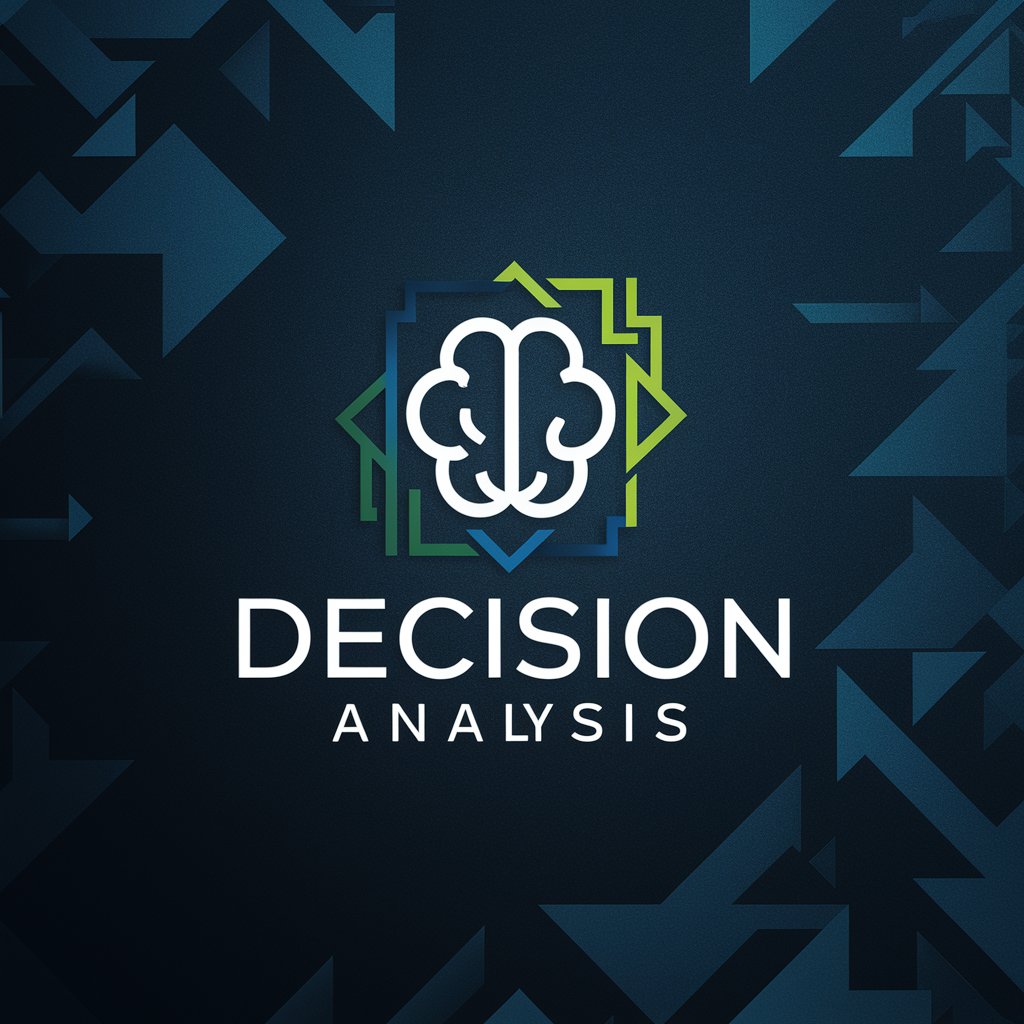
Decision Analysis - Decision-Making Support Tool

Welcome! I'm here to help you make better business decisions.
Empowering decisions with AI analysis
Analyze the pros and cons of launching a new product line.
Evaluate the risks and benefits of entering a new market.
Assess the potential outcomes of acquiring a competitor.
Determine the best approach for scaling the business in the next five years.
Get Embed Code
Introduction to Decision Analysis
Decision Analysis is a systematic, quantitative, and visual approach to addressing and evaluating important choices that businesses and individuals face. It combines theories from economics, psychology, statistics, and operations research to offer structured and rigorous frameworks for decision making. By assessing various options, their associated risks, and outcomes, Decision Analysis aids in identifying the most effective path forward in uncertain situations. For example, an entrepreneur contemplating the launch of a new product line would use Decision Analysis to weigh the potential market sizes, investment costs, risk of failure, and the expected returns from different markets to decide which product line to introduce. Powered by ChatGPT-4o。

Main Functions of Decision Analysis
Risk Assessment
Example
Evaluating the risk of entering a new market.
Scenario
A company considers expanding its operations into Asia. Decision Analysis helps quantify the market risks, such as demand variability and competitive intensity, and suggests risk mitigation strategies.
Cost-Benefit Analysis
Example
Comparing the costs and benefits of different technology investments.
Scenario
An IT firm deciding between investing in cloud infrastructure versus on-premises data centers. Decision Analysis helps map out the long-term costs, potential savings, and performance benefits to guide the investment decision.
Scenario Simulation
Example
Forecasting outcomes of strategic decisions under various market conditions.
Scenario
A startup assessing the impact of different pricing strategies on its market share and profitability over the next five years. Decision Analysis models various pricing scenarios to project future financial outcomes.
Ideal Users of Decision Analysis Services
Entrepreneurs and Business Owners
These individuals face numerous decisions about investments, product launches, and market expansions. Decision Analysis can provide them with a structured approach to evaluate their options, understand the risks, and make informed choices.
Project Managers
Project managers need to make decisions regarding project scope, timelines, and resource allocations. Decision Analysis offers tools for optimizing project outcomes and managing project risks effectively.
Policy Makers
For policy makers, Decision Analysis is valuable in evaluating the potential impacts of policy decisions, including economic, social, and environmental effects, to ensure that policies are effective and beneficial.

How to Use Decision Analysis
Start with a Free Trial
Begin by accessing a free trial at yeschat.ai, ensuring an immediate start without the need for a ChatGPT Plus subscription or even creating an account.
Define Your Decision Objective
Clearly articulate the primary goal of your decision-making process. This clarity will guide the selection of information and options to consider.
Gather and Analyze Information
Collect key information and data relevant to your decision. Utilize Decision Analysis to evaluate options based on this data, considering both pros and cons.
Consider Alternatives
Explore different scenarios and alternatives. Use the tool to simulate outcomes, assess risks, and weigh the benefits and costs of each option.
Make an Informed Decision
Leverage the insights and analysis provided to make a well-informed decision. Reflect on the short-term and long-term impacts of your choice.
Try other advanced and practical GPTs
Headline Hero
Craft Captivating Headlines with AI

ライトアップ(証券コード6580)の決算説明会を解説します
AI-powered Financial Earnings Analysis

Kill Diabetes | Cowboy Jack
AI-powered Diabetes Lifestyle Coach

Garage Guru
Your AI-powered Car Care Sage

AccelerantGPT
Empowering Development with AI-Powered Rust Expertise

ResOchyAI: 解像度教えます
Clarifying Resolution with AI Power

Samantha
Explore, Reflect, Grow with AI

GPTs Finder
Empowering AI-driven Insights and Solutions

芒格大师
Emulating Munger's Insightful Wisdom

MediGuide CN
Empowering your health with AI

Quick Revise
Enhancing Your Words, Maintaining Your Voice

Herobrine GPT
Unleash Your Creativity with AI-Powered Minecraft Insights

Frequently Asked Questions about Decision Analysis
What is Decision Analysis?
Decision Analysis is a systematic, quantitative, and visual approach to making complex decisions, utilizing models and techniques to evaluate different outcomes based on various factors and uncertainties.
How can Decision Analysis help entrepreneurs?
It assists entrepreneurs in making informed decisions by providing a structured framework to evaluate options, consider risks, and predict outcomes, thus reducing uncertainty and enhancing confidence in their choices.
Can Decision Analysis be used for personal decisions?
Yes, it's versatile enough to assist with personal decisions by applying the same principles of data gathering, scenario analysis, and outcome prediction to personal goals and dilemmas.
What are the common pitfalls in using Decision Analysis?
Common pitfalls include over-relying on incomplete data, underestimating the impact of uncertain factors, and failing to regularly update analysis as new information becomes available.
How does Decision Analysis handle uncertainties?
It uses probabilistic models and sensitivity analysis to assess and quantify uncertainties, allowing decision-makers to understand potential variability in outcomes and make contingency plans.





